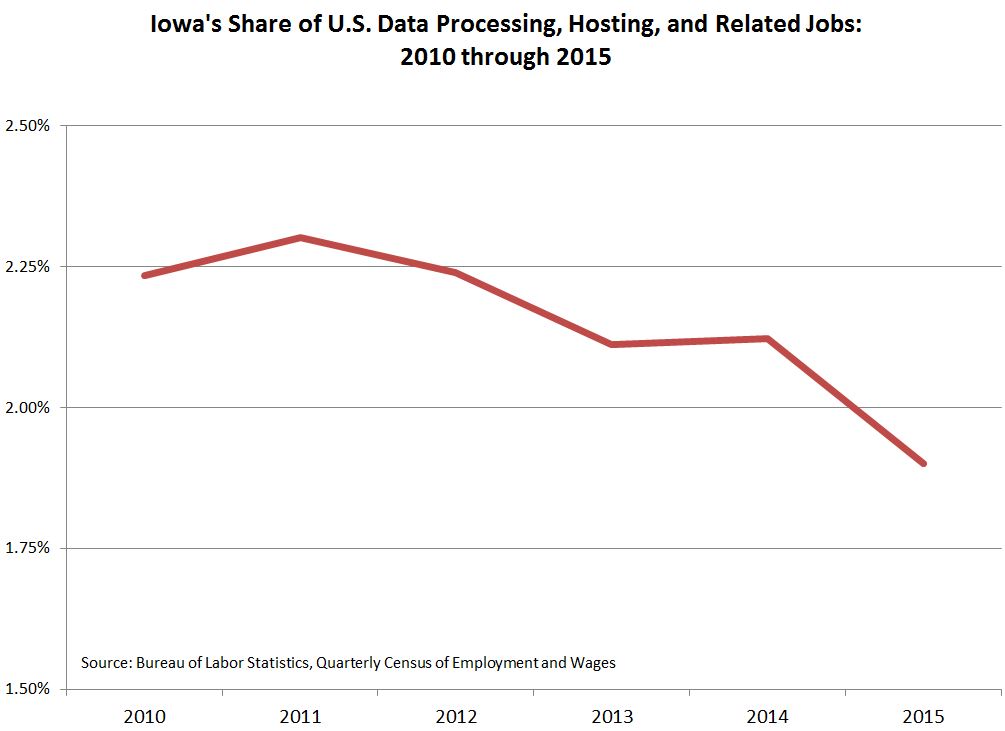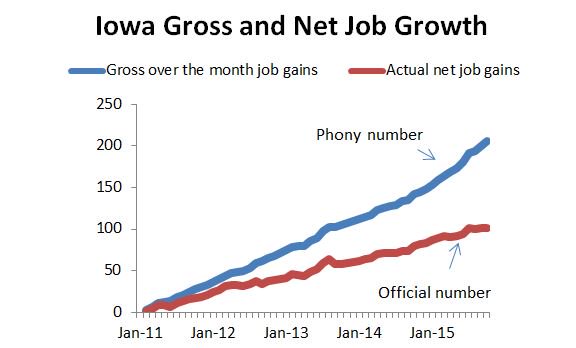“The Unsafe Bridges of Iowa Counties” wouldn’t be an appealing feature film, but it could be an appropriate subject for a documentary. The Transportation for America coalition released a report today on the state of bridges in the U.S., and the results are not pretty for Iowa. Nationwide, “69,223 bridges – 11.5 percent of total highway bridges in the U.S. – are classified as ‘structurally deficient,’ requiring significant maintenance, rehabilitation or replacement.” Table 1 and Appendix A of the full report (pdf) rank the states by percentage of structurally deficient bridges. Iowa’s percentage is nearly twice the national average: 21.7 percent of our state’s bridges are deficient. Only Pennsylvania and Oklahoma scored worse on this metric. Iowa is among just five states in which more than 20 percent of bridges are structurally deficient.
Appendix B shows the two busiest structurally deficient bridges in each state. In Iowa, those are an I-80/I-35 bridge over a drainage ditch in Polk County (average daily traffic 82,100 vehicles) and an I-29 bridge over the Floyd River in Woodbury County (average daily traffic 42,100 vehicles).
Appendix C shows the 100 worst counties nationwide in terms of percentage of deficient bridges. Iowa has 17 counties on this list, more than any other state.
Iowa has an unusually large number of towns and more road miles per capita than any other state, to my knowledge. Historically, our state’s political leaders have been reluctant to borrow to pay for infrastructure needs, which explains Iowa’s relatively low debt load and the furious Republican reaction to the last administration’s I-JOBS infrastructure bonding initiative. Some states routinely borrow to cover infrastructure projects, including our neighbor to the north. I wonder if Minnesota’s much larger state borrowing than Iowa over the years is one reason the state does relatively well in Transportation for America’s report (8.8 percent of bridges in the state are structurally deficient).
In the past, federal highway money has gone predominantly toward building new roads. The Transportation for America report advocates more federal assistance to states for fixing roads and bridges:
Allowing roads and bridges to slip into disrepair ultimately costs state and local governments billions more than the cost of regular, timely repair. Over a 25-year period, deferring maintenance of bridges and highways can cost three times as much as preventative repairs. The backlog also increases safety risks, hinders economic prosperity and significantly burdens taxpayers.
Preservation efforts can also extend the expected service life of a road for an additional 18 years, preventing the need for major reconstruction or replacement.4 In addition to the safety imperative, investing in the construction, expansion and repair of our nation’s transportation infrastructure creates jobs today while laying the foundation for long- term economic prosperity. Repair work on roads and bridges generates 16 percent more jobs than construction of new bridges and roads.5
A recent report on the use of federal stimulus funds for transportation showed that maintenance projects created more jobs per dollar spent than new road construction.
Transportation for America’s full report is here. After the jump I’ve posted the 17 Iowa counties that made Appendix C (worst 100 counties nationwide) and the percentage of deficient bridges in each. I also posted an excerpt from the report explaining the criteria for naming a bridge “structurally deficient.”
This page at Transportation for America’s website includes a map and chart with information about all 99 Iowa counties: number of bridges, number of structurally deficient bridges, percent of bridges that are structurally deficient, bridge average annual daily traffic and average daily traffic on structurally deficient bridges. After the jump I’ve posted an excerpt from that page showing Iowa’s five best and five worst counties in this area.
Continue Reading...


